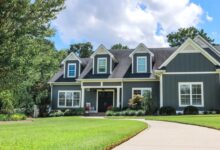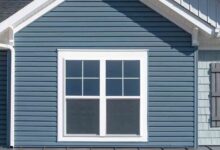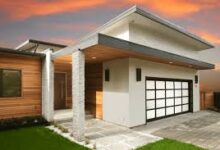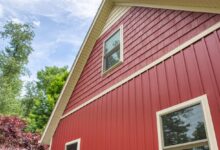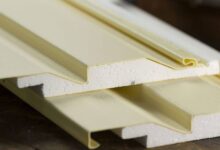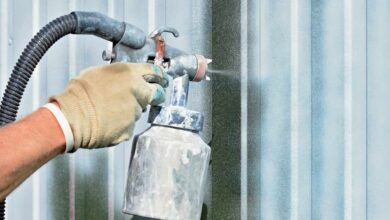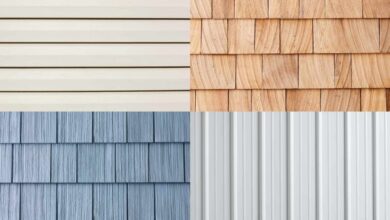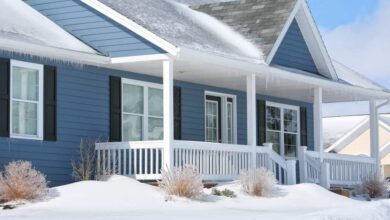Pros and Cons of Wood Siding
Wood siding is a popular choice for homeowners seeking to enhance their home’s curb appeal with a natural and timeless aesthetic. From classic wooden planks to advanced engineered wood options, wood siding offers a range of options, each with unique characteristics, benefits, and challenges. In this guide, we’ll explore the pros and cons of wood siding, discuss the benefits of engineered wood siding, and compare several popular products to help you make the best choice for your home.
Benefits of Wood Siding

Wood siding is a popular choice for homeowners looking to enhance both the aesthetics and functionality of their homes. Its natural beauty, durability, and environmental advantages make it an appealing material for various types of homes and climates. Below, we dive deeper into the specific benefits of wood siding, explaining how it can elevate your home and provide long-term value.
1. Timeless Aesthetic Appeal
One of the most significant benefits of wood siding is its natural, timeless beauty. Wood provides a warmth and texture that is difficult to replicate with other materials. Its inherent grain patterns, knots, and textures create a unique, rustic, and welcoming appearance. Whether you choose a rich cedar, pine, or redwood, each type of wood brings its own distinct character, making your home stand out in a way that other siding materials simply can’t match.
Wood siding can also be customized to fit a variety of architectural styles. It can be stained, painted, or left unfinished to achieve different looks, from a sleek and modern design to a more traditional or rustic vibe. The ability to change the finish over time means you can easily refresh the exterior of your home to keep it looking current and well-maintained.
Additionally, as wood ages, it develops a beautiful patina. Over time, weathered wood often takes on a silvery-gray hue, which many homeowners find appealing. This weathering process adds charm and character to the home, giving it a well-loved and classic appeal.
2. Sustainability and Environmental Benefits
In today’s environmentally conscious world, sustainability is a top priority for many homeowners. Wood siding is one of the most eco-friendly options available when sourced from responsibly managed forests. Unlike synthetic materials, wood is a renewable resource, which means it can be replenished over time. Additionally, the carbon footprint of wood siding is lower than many other building materials, particularly when compared to options like vinyl or cement.
When harvested sustainably, wood siding supports forest management practices that reduce environmental impact and promote the health of ecosystems. Moreover, wood is biodegradable, which makes it easier to recycle or repurpose when it reaches the end of its life cycle.
Many manufacturers also offer wood siding products that come from certified sustainable sources. Certifications such as the Forest Stewardship Council (FSC) indicate that the wood used in your siding is responsibly sourced, ensuring minimal environmental impact. For homeowners concerned about their environmental footprint, opting for FSC-certified wood siding is a way to make a responsible, sustainable choice.
3. Energy Efficiency
Wood is an excellent natural insulator, which helps to regulate the temperature inside your home. As a building material, wood has the ability to trap air within its cellular structure, providing a natural barrier against heat loss during the colder months and heat gain during the warmer months. This can help maintain a comfortable indoor environment year-round, reducing the need for excessive heating or cooling.
By choosing wood siding, homeowners can benefit from a natural form of insulation, which can translate to lower energy costs. While this benefit may not be as significant as investing in advanced insulation products, wood siding’s insulating properties can still contribute to a more energy-efficient home. This can be especially useful for homes in climates with extreme seasonal temperature variations.
Moreover, the energy efficiency of wood siding is enhanced when paired with a quality underlayment or insulation. By opting for insulated wood siding, homeowners can create an even more energy-efficient exterior, potentially saving even more on heating and cooling costs.
4. Durability and Longevity
When maintained properly, wood siding can offer exceptional durability and longevity. High-quality wood, particularly cedar and redwood, has natural oils that resist rot, decay, and insect infestations. These oils act as preservatives, allowing the wood to last longer even in damp or humid climates. For homeowners in coastal areas or regions with heavy rainfall, wood siding can be an excellent choice due to its natural resistance to moisture and the elements.
The durability of wood siding can be extended with proper maintenance, including regular staining, sealing, and painting. By applying protective coatings, homeowners can safeguard their wood siding from damage caused by UV rays, moisture, and pests. In addition, well-maintained wood siding can withstand harsh weather conditions like strong winds and freezing temperatures.
For even greater protection, some homeowners opt for pre-treated wood or opt to install siding products that are specifically designed to resist rot, mold, and mildew. Engineered wood options, for example, often feature additional protective layers that improve their resistance to the elements while maintaining the look of natural wood.
5. Customizability and Versatility
Wood siding offers significant flexibility when it comes to customization. Whether you’re looking for a traditional look or something more modern, wood can be crafted to meet a wide variety of design preferences. You can choose from various profiles and styles, such as horizontal planks, vertical siding, board-and-batten, or shingles. This allows homeowners to create a distinctive look that suits the character of their home, neighborhood, or personal taste.
Additionally, wood can be treated in different ways to achieve the exact aesthetic you’re after. The natural grain of the wood can be accentuated with transparent stains, while solid paints can be used to create a completely uniform appearance. Over time, wood can also be refinished to refresh its appearance or change its color, offering homeowners the opportunity to update their home’s exterior without the need for entirely new materials.
This versatility allows wood siding to complement various architectural styles, from rustic cabins and traditional cottages to more contemporary, minimalist designs. The wide array of finishes available also makes it easy for homeowners to match the siding with other exterior elements, such as windows, doors, and trim.
6. Increased Property Value
Wood siding is often considered a premium material that can add significant value to your home. Homes with well-maintained wood exteriors are highly sought after, particularly in markets where natural aesthetics are a priority. The beauty and timeless appeal of wood siding can make your property stand out to potential buyers, especially if it’s complemented by other high-end finishes and landscaping.
Beyond aesthetic value, wood siding can improve your home’s energy efficiency, which is another selling point for prospective buyers. Homes that are energy-efficient tend to attract more interest in the marketplace, and wood siding’s insulating properties can contribute to this overall appeal.
Moreover, wood siding can be a cost-effective investment in the long run. While the upfront cost of wood siding may be higher than that of vinyl or aluminum options, its durability and timeless appeal mean that it can increase your home’s resale value, making it a worthwhile investment for those planning to sell in the future.
7. Ability to Blend with Natural Surroundings
Wood siding has a unique ability to blend seamlessly with natural surroundings. Whether you live in a wooded area, near the coast, or in a rural setting, wood siding can complement the natural landscape, creating a harmonious connection between your home and its environment. The organic texture and colors of wood help it to integrate smoothly with the natural elements of your property, enhancing its curb appeal without disrupting the surroundings.
For homeowners who prefer a more eco-conscious lifestyle, wood siding is an ideal choice. It’s a material that reflects a desire to live in harmony with nature, and its adaptability ensures that it can work in various outdoor settings, whether you’re looking to create a rustic farmhouse look or a sleek, modern design that emphasizes natural beauty.
The benefits of wood siding are numerous, making it a compelling choice for homeowners seeking a combination of beauty, durability, sustainability, and energy efficiency. Whether you’re drawn to its timeless aesthetic, its environmental advantages, or its ability to enhance your home’s overall performance, wood siding offers a long-lasting solution that can add significant value and charm to your property. By understanding the full range of benefits, you can make an informed decision about whether wood siding is the right choice for your home.
Pros and Cons of Wood Siding
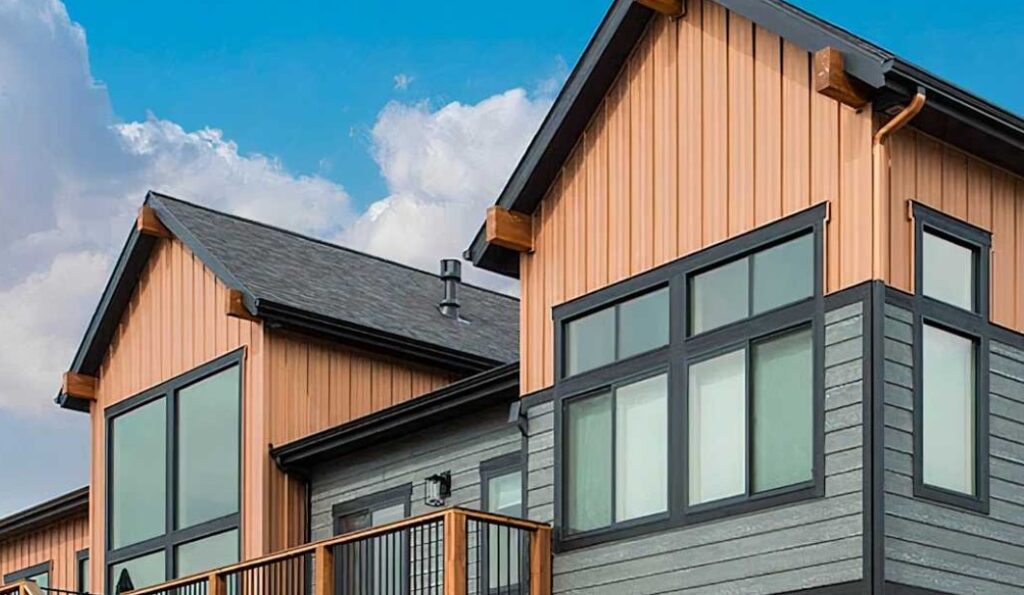
Like all materials, wood siding has its advantages and drawbacks. Understanding these pros and cons will help you decide if it is the right choice for your home.
Pros of Wood Siding
- Natural Aesthetic: Wood offers unmatched beauty and texture, making it a standout choice for many homeowners.
- Longevity: With proper care, wood siding can last for decades.
- Eco-Friendly: Wood is a renewable material, and when sourced responsibly, it is an environmentally friendly choice.
- Energy Efficiency: The natural insulation properties of wood help keep energy costs down.
Cons of Wood Siding
- Maintenance Requirements: Wood siding requires regular maintenance, including sealing, staining, and painting to protect against moisture, insects, and weathering.
- Susceptibility to Pests: Certain wood types can be vulnerable to termites and other pests, which can cause damage over time.
- Cost: High-quality wood siding can be expensive, especially if you’re opting for premium wood like cedar or redwood.
Engineered Wood Siding: A Modern Alternative
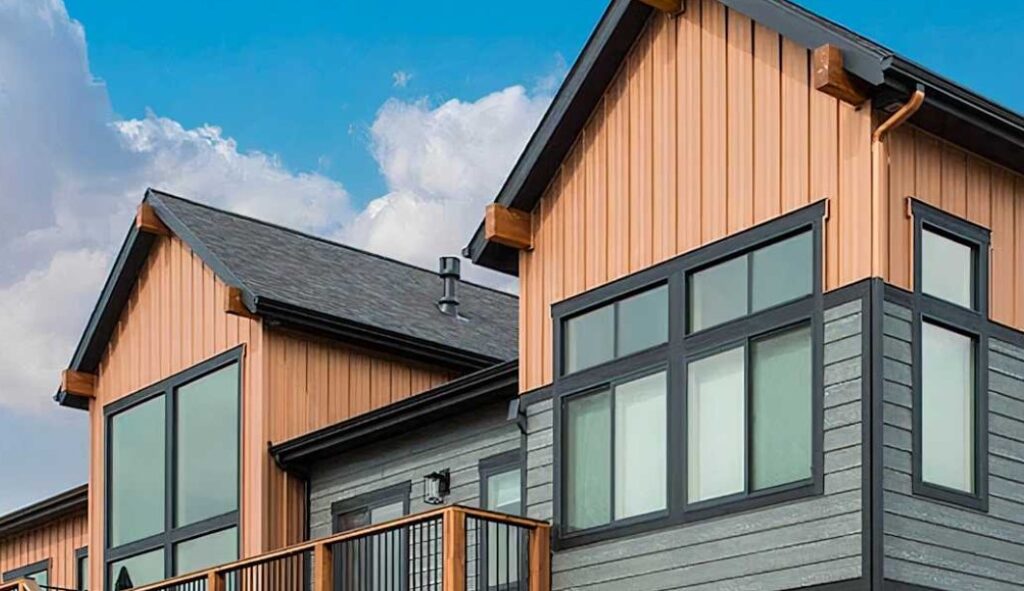
In recent years, engineered wood siding has become an increasingly popular choice for homeowners. Engineered wood is made from wood fibers and resins that are compressed and bonded to create a material that mimics the look of natural wood. Let’s dive deeper into the pros and cons of engineered wood siding.
What Is Engineered Wood Siding?
Engineered wood siding combines wood fibers with synthetic materials to create a product that is more durable and stable than traditional solid wood. It often comes pre-finished, which means less maintenance for homeowners.
Benefits of Engineered Wood Siding
- Durability and Resistance to Pests
Unlike traditional wood siding, engineered wood siding is resistant to pests such as termites and rot. This makes it a good choice for homeowners in areas prone to pest infestations. - Lower Maintenance
Engineered wood typically requires less maintenance than natural wood. It resists fading and warping, which can help preserve your home’s appearance over time without frequent touch-ups. - Eco-Friendly Manufacturing
Engineered wood products are often made from recycled materials, contributing to their overall sustainability. They also require fewer resources to produce than solid wood siding.
Drawbacks of Engineered Wood Siding
- Initial Cost
While engineered wood siding can be less expensive than high-end natural woods like cedar, it still tends to be more expensive than vinyl or fiber cement siding. - Limited Aesthetic Variety
Though engineered wood closely mimics the appearance of natural wood, it may not have the same texture or grain patterns that real wood offers.
Comparing Wood Siding vs. Engineered Wood Siding
When it comes to deciding between natural wood siding and engineered wood siding, it’s essential to consider several factors including cost, maintenance, durability, and aesthetic preferences.
Natural Wood Siding
- Pros: Offers a timeless, authentic look that many homeowners appreciate; can be refinished to change colors.
- Cons: Requires regular maintenance, susceptible to pests and weather damage, can be costly.
- Best For: Homeowners looking for a high-end, classic look and who are willing to maintain their siding regularly.
Engineered Wood Siding
- Pros: More durable and pest-resistant than natural wood; lower maintenance; environmentally friendly.
- Cons: Higher upfront costs; may lack the unique grain and texture of natural wood.
- Best For: Homeowners who want the look of wood with less upkeep and greater durability.
Top Engineered Wood Siding Products

- LP SmartSide® Siding
LP SmartSide® offers high-quality engineered wood siding with superior durability and resistance to moisture, pests, and mold. It is available in a variety of finishes and textures, offering a natural wood look.
Price Range: $4 – $7 per square foot.
LP SmartSide® SidingPros: Long-lasting, low maintenance, comes in pre-finished colors.
Cons: Higher upfront cost compared to traditional wood siding. - James Hardie® HardiePlank® Siding
James Hardie® is known for its engineered wood siding, which offers a variety of designs and colors. It is designed to resist damage from pests, extreme weather, and fading.
Price Range: $5 – $9 per square foot.
James Hardie® HardiePlank® SidingPros: Very durable, wide selection of styles and colors, resistant to pests and rot.
Cons: Initial installation costs can be high. - CertainTeed® CedarBoards® Insulated Siding
CertainTeed® offers engineered wood siding with an additional layer of insulation. This provides added energy efficiency along with a beautiful, authentic wood appearance.
Price Range: $4 – $6 per square foot.
CertainTeed® CedarBoards® SidingPros: Added insulation for energy savings, durable, reduces outdoor noise.
Cons: Slightly more expensive than non-insulated options.
How to Buy Wood Siding and Where to Buy It
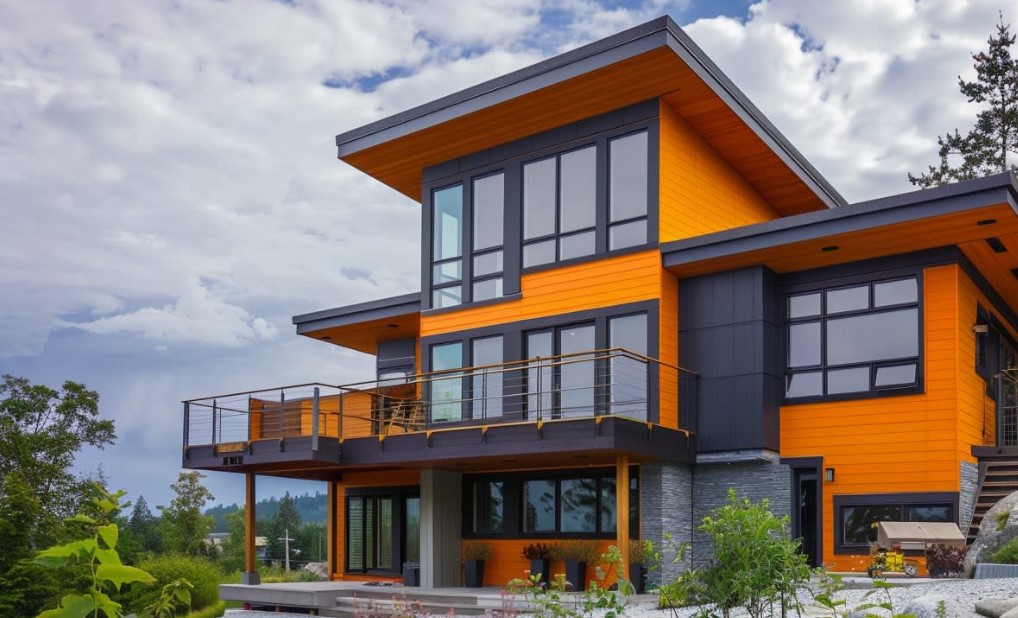
Wood siding is available at major home improvement retailers, including Home Depot, Lowe’s, and specialized suppliers. Many manufacturers offer direct sales via their websites, and several online platforms provide shipping to your location.
- Where to Buy:
- Home Depot: Offers a wide selection of wood siding types, including cedar, pine, and engineered wood products.
- Lowe’s: A popular choice for purchasing wood siding materials, including a range of high-quality engineered wood options.
- Online Suppliers: For convenience, many online retailers offer direct delivery of wood siding products.
- How to Buy:
To buy, visit the respective retailer’s website, choose your preferred siding product, and add it to your cart. Alternatively, visit a local store to see the products in person.
FAQs
- What is the difference between wood siding and engineered wood siding?
Wood siding is made from solid wood planks, whereas engineered wood siding is made from wood fibers and resins, making it more durable and resistant to pests and moisture. - Is wood siding better than engineered wood siding?
It depends on your preferences and needs. Wood siding offers a natural aesthetic and traditional look, while engineered wood siding offers greater durability, less maintenance, and a more eco-friendly manufacturing process. - How long does wood siding last?
With proper maintenance, wood siding can last anywhere from 20 to 40 years. Engineered wood siding typically has a longer lifespan, often exceeding 40 years.
Choosing the right siding for your home is a crucial decision that impacts both its appearance and long-term performance. Whether you decide on natural wood siding or engineered wood siding, it’s essential to weigh the pros and cons of each to determine the best fit for your budget, maintenance preferences, and style.
